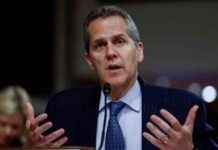The European Central Bank (ECB) is poised to take action once again, announcing a rate cut for the fourth consecutive time in an effort to combat rising inflation. This decision comes amidst global economic tensions, including threats from US President Trump against the European Union. The President of the ECB, Christine Lagarde, has been at the forefront of this crucial decision-making process, navigating a complex web of economic factors to ensure stability in the Eurozone.
**Challenging Economic Environment**
The decision to lower interest rates yet again reflects the ECB’s response to a challenging economic environment. Inflation rates have been creeping up, prompting concerns about the overall health of the Eurozone economy. By cutting rates, the ECB aims to stimulate economic activity and keep inflation in check. However, this move is not without its critics, as some argue that it may not be enough to address the underlying issues facing the region.
**Global Pressures and Political Threats**
Adding to the complexity of the situation are the global pressures facing the Eurozone, including threats from US President Trump. Trump’s ongoing trade disputes with the EU have created additional uncertainty and volatility in the markets. The ECB must navigate these external threats while also focusing on domestic economic stability.
**Leadership and Decision-Making**
At the helm of these critical decisions is Christine Lagarde, the President of the ECB. Lagarde, a seasoned economist and former head of the International Monetary Fund, brings a wealth of experience to her role. Her leadership style and ability to navigate complex economic issues have been instrumental in guiding the ECB through these turbulent times.
**Implications for the Eurozone**
The ECB’s decision to cut rates for the fourth consecutive time will have far-reaching implications for the Eurozone. While the move is intended to stimulate growth and control inflation, it also carries risks and uncertainties. As the Eurozone grapples with economic challenges and external threats, the ECB’s actions will play a crucial role in shaping the region’s economic future.
**Looking Ahead**
As the ECB prepares to implement its latest rate cut, all eyes are on Christine Lagarde and her team. The coming months will be crucial in determining the effectiveness of these measures and the overall trajectory of the Eurozone economy. With global pressures mounting and economic uncertainties looming, the ECB’s decisions will be more important than ever in shaping the future of the Eurozone.



















